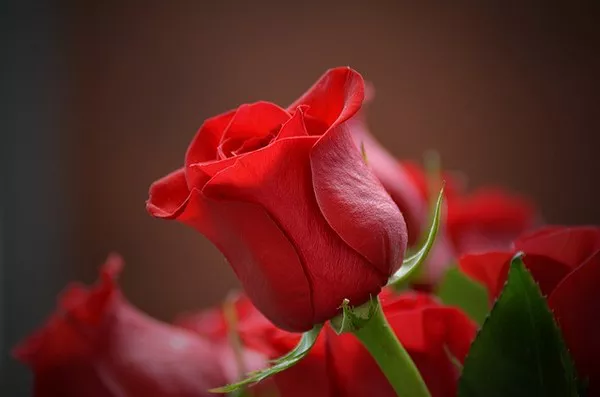Preserving flowers from your wedding day is a beautiful way to cherish memories for years to come. Whether it’s the bouquet you held as you walked down the aisle or the centerpieces that adorned your reception tables, these blooms hold sentimental value that deserves to be cherished long after the big day has passed. In this comprehensive guide, we will explore various methods and tips for preserving flowers from your wedding, ensuring that they remain vibrant and intact for years to come.
Understanding Flower Preservation
Before diving into preservation methods, it’s essential to understand the science behind flower preservation. Flowers are delicate structures composed of organic matter that is prone to decay over time. When cut from their source, they begin to lose moisture and nutrients, leading to wilting and eventual deterioration.
Preservation techniques aim to halt this natural decay process by removing moisture from the flowers and treating them with substances that maintain their shape and color. By employing the right methods, you can extend the lifespan of your wedding flowers and enjoy their beauty for an extended period.
Choosing the Right Flowers
Not all flowers are suitable for preservation, so it’s crucial to choose blooms that are known for their longevity and ability to retain their shape and color. Roses, peonies, hydrangeas, and lilies are popular choices for preservation due to their sturdy petals and vibrant hues. Additionally, consider selecting flowers with sentimental value or personal significance to enhance the emotional impact of preserving them.
Timing Is Key
Timing plays a crucial role in the success of flower preservation. It’s best to start the preservation process as soon as possible after the wedding while the flowers are still fresh. Ideally, aim to preserve them within 24 to 48 hours of being cut to ensure optimal results. Waiting too long can lead to wilting and diminished quality, making preservation more challenging.
Methods of Flower Preservation
There are several methods available for preserving wedding flowers, each with its own advantages and considerations. Here are some popular techniques:
Air Drying:
Air drying is one of the simplest and most cost-effective methods of preserving flowers. To air dry your wedding flowers, gather them into small bunches and hang them upside down in a warm, dry, and well-ventilated area. Allow them to dry completely, which may take several weeks depending on the type of flower and environmental conditions. Once dried, the flowers can be displayed in shadow boxes, frames, or vases.
Pressing:
Pressing is another traditional method of flower preservation that involves flattening flowers between absorbent materials such as blotting paper or parchment paper. To press flowers, place them between layers of paper within a heavy book or flower press and leave them to dry for several weeks. Pressed flowers can be used to create various crafts, such as greeting cards, bookmarks, or framed artwork.
Silica Gel:
Silica gel is a desiccant substance that absorbs moisture and preserves flowers quickly and effectively. To preserve flowers using silica gel, place them in a container filled with silica gel crystals, ensuring that the blooms are completely covered. Seal the container and leave it undisturbed for several days until the flowers are fully dried. Silica gel preserves the shape and color of the flowers remarkably well, making it a popular choice for wedding flower preservation.
Freeze Drying:
Freeze drying is a professional preservation method that involves freezing flowers at extremely low temperatures and removing moisture through sublimation. While freeze drying is more costly than other preservation methods, it offers superior results in terms of color retention and texture. Many florists and specialized preservation companies offer freeze-drying services for wedding flowers, providing a convenient option for couples seeking professional preservation.
Resin Casting:
Resin casting is a modern and creative method of preserving flowers by encasing them in transparent resin. This technique allows you to create stunning keepsakes, such as jewelry, paperweights, or ornaments, that showcase the beauty of your wedding flowers. While resin casting requires some skill and specialized materials, it offers endless possibilities for personalized and unique mementos.
Tips for Successful Preservation
Regardless of the preservation method you choose, there are some universal tips to ensure successful results:
Handle Flowers with Care:
Treat your wedding flowers gently to avoid damaging delicate petals and stems. Use sharp scissors to trim stems and remove any foliage that may come into contact with the preservation materials.
Choose Flowers at Their Peak:
Select flowers for preservation when they are at their peak bloom and free from blemishes or imperfections. Avoid using flowers that are already wilting or showing signs of decay, as they may not preserve well.
Control Environmental Conditions:
Maintain optimal environmental conditions for flower preservation, including moderate temperatures, low humidity, and good air circulation. Avoid exposing preserved flowers to direct sunlight or moisture, as this can cause fading and mold growth.
Follow Preservation Instructions:
If you opt for professional preservation services or use specialized preservation products, be sure to follow the manufacturer’s instructions carefully. Each method may have specific requirements for preparation, drying times, and storage.
Protect Preserved Flowers:
Once your wedding flowers are preserved, take steps to protect them from dust, moisture, and physical damage. Display them in a secure location away from pets, children, and direct sunlight to ensure their longevity.
Conclusion
Preserving flowers from your wedding allows you to hold onto cherished memories and create meaningful keepsakes that can be enjoyed for years to come. Whether you choose to dry your flowers using traditional methods like air drying or pressing or opt for professional preservation services such as freeze drying or resin casting, the key is to start the preservation process as soon as possible after the wedding and handle the flowers with care. With proper techniques and attention to detail, you can preserve the beauty of your wedding flowers and continue to relive the magic of your special day for generations to come.


